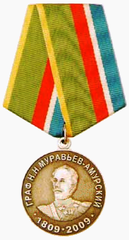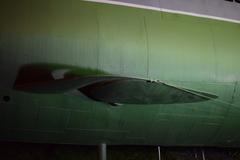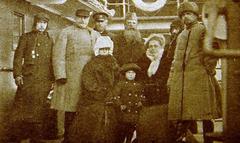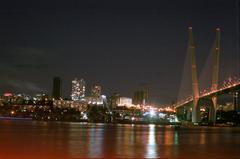
Port of Vladivostok Visiting Hours, Tickets, and Travel Guide
Date: 03/07/2025
Introduction to the Port of Vladivostok
The Port of Vladivostok is a vital maritime gateway in Russia’s Far East, combining rich history, strategic importance, and dynamic urban culture. Situated on the Muravyov-Amursky Peninsula along the Sea of Japan, the port stands as a crossroads between Europe and Asia, offering travelers a unique blend of historical intrigue, modern infrastructure, and diverse attractions. Whether you’re a history buff, maritime enthusiast, or cultural explorer, a visit to Vladivostok promises a rewarding and memorable experience (travelshelper.com; military-review.com).
This guide covers everything you need to know: from historical highlights and must-see sites, to practical details like visiting hours, ticketing, accessibility, and travel tips.
Table of Contents
- Historical Overview
- Visiting the Port of Vladivostok: Key Information
- Top Attractions and Museums Near the Port
- Practical Travel Tips
- Frequently Asked Questions (FAQ)
- Conclusion
- Sources
Historical Overview
Origins and Early Development
Founded in 1860 after pivotal treaties with Qing China, Vladivostok began as a military outpost designed to solidify Russia’s influence in the Far East. Its name means “Ruler of the East,” reflecting its intended strategic role. The city’s location provided natural defenses and access to regional shipping lanes (travelshelper.com).
By 1872, Vladivostok became the principal Russian naval station on the Pacific, spurring urban and economic growth. The opening of the Trans-Siberian Railway in the late 19th century further transformed Vladivostok into a cosmopolitan port city, linking it with the rest of Russia and facilitating trade and migration (military-review.com).
Fortress City and Military Significance
Vladivostok’s status as a fortress city was formalized in 1889, with advanced coastal defenses and underground fortifications constructed to protect Russia’s eastern frontier. These military installations played crucial roles during conflicts such as the Russo-Japanese War and World War II, and the city remained a closed military zone throughout much of the Soviet period (military-review.com; ve7pro.com).
Economic Growth and 20th Century Events
The arrival of the Trans-Siberian Railway in 1916 cemented Vladivostok’s status as Russia’s eastern terminus, supporting rapid population growth and a vibrant, multicultural society. In the 20th century, Vladivostok experienced occupation by foreign troops during the Russian Civil War, became a key site for Soviet naval operations, and played a pivotal role in the Lend-Lease program during World War II (travelshelper.com).
Modern Era and Economic Importance
After the dissolution of the Soviet Union, Vladivostok reopened to international visitors and trade. The port is now Russia’s largest in the Far East, serving as a key logistics hub for trade with Asia-Pacific nations. Vladivostok has embraced its multicultural heritage, earning the nickname “Europe in the Far East,” and continues to modernize its port facilities and urban infrastructure (en.vmtp.ru; touristplaces.guide; Free port of Vladivostok).
Visiting the Port of Vladivostok: Key Information
Visiting Hours and Ticketing
- Port Public Areas: Open daily, 8:00 AM – 8:00 PM. Passenger terminals operate from 6:00 AM – 10:00 PM.
- Vladivostok Fortress Museum: 9:00 AM – 5:00 PM (last admission 4:30 PM), tickets ~300 RUB (Vladivostok Fortress).
- Russky Island Museums: 9:00 AM – 5:00 PM; ticket prices similar to fortress museum.
- Maritime Museum: 10:00 AM – 6:00 PM, closed Mondays, tickets ~250 RUB.
- Boat/Harbor Tours: May–September, 10:00 AM – 6:00 PM, tickets 800–1500 RUB (Boat Tours).
Advance booking is recommended for guided tours and boat cruises, especially during peak tourist seasons.
Accessibility
- Most major museums and the passenger terminal have wheelchair access and adapted restrooms.
- Some historical sites (fortresses, submarine museum) have stairs or uneven terrain. Contact venues in advance for assistance or accessibility details.
Tours and Special Events
- Guided Tours: English and Russian tours available daily at fortress and maritime museums, and for boat excursions.
- Special Events: Historical reenactments, naval parades, and festivals (e.g., Navy Day, Smelt Fish Festival) are held during summer months (Smelt Fish Festival).
Getting There and Around
- By Air: Vladivostok International Airport (VVO) is ~44 km from the city center, with frequent shuttles, taxis, and buses connecting to the port (Russian e-Visa).
- By Train: The Trans-Siberian Railway’s eastern terminus is within walking distance of the port.
- Public Transport: Buses, trams, and taxis are widely available. The funicular provides access to Eagle’s Nest Hill for panoramic views.
- Ferries: Depart from the port for Russky Island and other nearby destinations.
Top Attractions and Museums Near the Port
- Vladivostok Fortress Museum: Explore underground bunkers and the city’s military legacy.
- S-56 Submarine Museum: Step aboard a WWII submarine docked along the waterfront (Submarine S-56).
- Golden Horn Bay Promenade: Stroll along the lively embankment with views of the Zolotoy Bridge and city skyline.
- Russky Bridge and Russky Island: Enjoy Russia’s longest cable-stayed bridge and island attractions like the Primorsky Aquarium (Primorsky Aquarium).
- Eagle’s Nest Hill: Ride the funicular or hike for panoramic city and harbor vistas (Eagle’s Nest Hill).
- Admiral Fokin Street: Vladivostok’s vibrant pedestrian zone filled with cafes and shops (Admiral Fokin Street).
Practical Travel Tips
- Best Time to Visit: June–September for pleasant weather and festivals (Best Time to Visit).
- Visas: Most travelers need a Russian visa; the Russia eVisa is available for over 50 countries (eVisa Russia).
- Currency: Russian Ruble (RUB); ATMs are widely available, though carry some cash for small purchases (Currency Tips).
- Language: Russian is primary, but English signage is common in tourist zones.
- Safety: The port and city are safe for tourists—standard precautions apply (Russian e-Visa).
- Transport: Yandex.Taxi and Uber operate in Vladivostok for easy city travel.
Frequently Asked Questions (FAQ)
Q: What are the Port of Vladivostok’s visiting hours?
A: Public port areas are open 8:00 AM–8:00 PM; passenger terminal operates 6:00 AM–10:00 PM. Museums and attractions generally open 9:00 AM–6:00 PM.
Q: Are tickets required to enter the port?
A: The port embankment and promenades are free. Museum and guided tour entry requires tickets.
Q: How do I buy tickets for museums or boat tours?
A: Tickets are available online, at museum entrances, or at the passenger terminal. Advance purchase is recommended in summer.
Q: Is the port accessible for visitors with disabilities?
A: Major terminals and some attractions offer accessible facilities, though historic sites may have limited access.
Q: Are there guided tours?
A: Yes, guided tours are available in English and Russian for museums, fortress sites, and harbor cruises.
Q: What are the top historical sites near the port?
A: Highlights include Vladivostok Fortress, S-56 Submarine Museum, Eagle’s Nest Hill, and the railway station.
Conclusion
The Port of Vladivostok is more than a transit hub—it’s a living testament to Russia’s maritime legacy and a vibrant entry point to the country’s Far East. With a combination of historical sites, scenic waterfronts, modern amenities, and rich cultural events, Vladivostok offers something for every traveler. Plan ahead with this guide for a seamless experience, and be sure to explore the city’s many attractions beyond the port itself.
For up-to-date travel information, events, and ticket bookings, download the Audiala app and follow our social media channels. Embark on your Vladivostok adventure today!
Sources
- Port of Vladivostok: History, Hours, Tickets, and Travel Tips (travelshelper.com)
- Vladivostok: The Main Russian Fortress in the Far East (military-review.com)
- History of Vladivostok (en.wikipedia.org)
- 10 Breathtaking Tourist Places to Visit in Vladivostok (touristplaces.guide)
- Official Port of Vladivostok Website (en.vmtp.ru)
- Vladivostok Travel: Attractions and Activities (vladivostok.travel)
- Complete Guide to Visiting Vladivostok (hellotravel.com)
- Explore Vladivostok (explorecity.life)
- Primorsky Aquarium (vladivostok.travel)
- Best Time to Visit Vladivostok (best-time.to)
- Russian e-Visa to Vladivostok (evisarussia.org)
- Russian e-Visa Guide (russian-e-visa.com)





